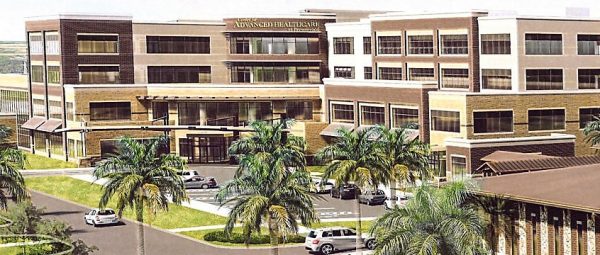The Villages might be a retirement mecca packed with seniors enjoying high-dollar pensions and investments that have paid off nicely, but it also owns the distinction of having the highest rate of full-time employees stuck in poverty.
That’s according to a recent study conducted by the financial website 24/7 Wall St., which claims Florida’s Friendliest Hometown has the highest rate of “working poor” – 4.4 percent – much higher than the national average of 3 percent.

The study defines “working poor” as those who have jobs but are not able to pay their bills, afford healthcare coverage or take care of many basic necessities. This would include many of those workers who earn wages from local restaurants, golf courses and medical practices, to name a few. Many of those employees are considered as living on the edge of irreversible poverty.
The study says that The Villages has an overall poverty rate of 9.2 percent. Just 34.5 percent of the population between the ages of 16-64 works full-time, but that’s largely because 125,000-plus retirees call the sprawling community home. But the mega-retirement community still has a 4.9 percent unemployment rate, which is quite a bit higher than the national average of 3.5 percent in September.

According to the study, 25 percent of full-time workers – the average workweek is just 36.4 hours – are employed in education and health services jobs, with an average weekly salary of $835. Another 9.5 percent earn their wages through leisure and hospitality, including many who are actually employees of The Villages. Those workers get paid about $405 per week, which falls significantly under the nationwide average pay for all workers of $1,101, the study says.
Workers who currently struggle to make ends meet and happen to own homes in Sumter County also will soon be seeing more of their paychecks disappear, as the county commission voted last month to raise property taxes by 25 percent. Those who rent homes or apartments also are likely to feel that pinch, as landlords are more than likely going to raise rental fees to cover the additional costs the county claims it needs to provide infrastructure and roadway needs in the newest section of The Villages south of State Road 44. And it stands to reason that apparent use of food trucks in the newest part of the community instead of country clubs also could cut into the number of area jobs available to workers.

The only other Florida city to make the list was Sebring, which finished in the 11th spot with a poverty rate of 5.7 percent for its full-time workforce. Also located in Central Florida, the typical Sebring household annual income is $36,374, which is the second lowest of any U.S. metro area. About 5.1 percent of Sebring’s workforce is unemployed, while a whopping 18.7 percent live in poverty.
The top-10 cities/areas on the list, including their poverty rate of full-time workers and the official overall poverty rate are:
- 1. The Villages, Fla. (4.4 percent, 9.2 percent)
- 2. McAllen/Edinburg/Mission, Texas (11.3 percent, 31.8 percent)
- 3. Idaho Falls, Idaho (4 percent, 11.5 percent)
- 4. Brownsville/Harlingen, Texas (10.8 percent, 31.2 percent)
- 5. San Angelo Texas (4.4 percent, 12.9 percent)
- 6. St. George, Utah (4.7 percent, 14.2 percent)
- 7. Las Cruces, N.M. (9.2 percent, 27.9 percent)
- 8. Laredo, Texas (10.2 percent, 31.5 percent)
- 9. Gainesville, Ga. (5.2 percent, 16.1 percent)
- 10. Amarillo, Texas (4.6 percent, 15 percent)
- 11. Sebring, Fla. (5.7 percent, 18.7 percent)
- 12. Decatur, Ala. (4.9 percent, 16.6 percent)
- 13. Monroe, La. (7.1 percent, 24.2 percent)
- 14. Alexandria, La. (5.7 percent, 19.6 percent)
- 15. Goldsboro, N.C. (6.1 percent, 21.2 percent)
- 16. Coeur d’Alene, Idaho (3.6 percent, 12.6 percent)
- 17. Lake Charles, La. (7.4 percent, 16.5 percent)
- 18. Hilton Head Island/Bluffton/Beaufort, S.C. (3.8 percent, 13.4 percent)
- 19. Dalton, Ga. (5.3 percent, 18.9 percent)
- 20. Bakersfield, Calif. (6.3 percent, 22.6 percent)

